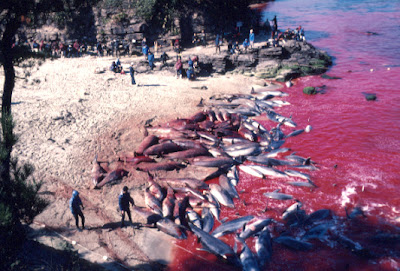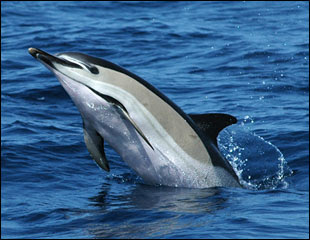Big
cat populations around the world are in drastic decline. Tigers are endangered
and on the verge of extinction, Lions may be extinct in the wild by 2030 if we
continue on our current course, Cheetahs and Clouded Leopards are classified as
vulnerable and face greater pressure every single day, and snow leopards are
endangered (possibly critically endangered, we simply don’t know enough about
their population numbers because seeing them is such a rarity). There are some
species that are even worse off than all of that; the Amur leopard is down to just
around 20 individuals and on our current path there is little hope they will be
saved, The Siberian (or Amur) Tiger is down to under 350 individuals, and the
Iberian Lynx which is the rarest cat species in the world is down to around 100
individuals spread across three isolated populations. (The Amur leopard is not
categorized as its own species, it is classified as subspecies of leopard
despite the fact it is very different from its African brethren, otherwise it
would be known as the rarest species of cat). If any one of these species goes
extinct it will be the first species of feline to go extinct since Smilodon
(saber-tooth). Big cats are under attack from all angles and without
intervention we may lose them forever.
These
strong, powerful, beautiful, and majestic beasts have fascinated and left us in
awe since we were living in caves, which is apparent when you think about how
often you see a picture of a big cat. Seriously think about it for a moment,
big cats are absolutely everywhere. They’re the mascots of our sports teams,
they’re on our cereal boxes and family crests, they’re in the logos of
countless businesses and corporations, and so many more places it is impossible
to count. They’re engrained so deep in our consciousness that we don’t even
realize how prevalent they are in our daily lives and how intrinsically
important they are to us. If I just said the word Africa to you it’s more than
likely that one of the first things, if not the very first thing, you would
think of is a lion. Lions and tigers, cheetahs and leopards; Big cats are loved
by hundreds of millions worldwide, probably including many of you reading this
right now.
The
threats big cats face are varied, numerous and growing. Every species of big
cat is poached for their pelts. Lions, tigers, and snow leopards are poached
for use in traditional Chinese medicines and for consumption. Locals poison
them like pests, and every day their habitats gets smaller and smaller as man
continues its unyielding effort to dominate every spit of land we can get our
greedy hands on. As big cat habitats get smaller and smaller the possibility of
populations recovering is getting less and less likely. Their numbers fall farther
every single day and the problem is so vast and ignored that the best efforts
of conservationists worldwide are hardly making a dent in the global slaughter.
So
if many of us love big cats how are we letting this happen? What are the
obstacles preventing us from saving big cats everywhere? Well the answers to
that are very simple. Firstly people just don’t know the extent of the problem.
The plight of big cats isn’t a part of our daily lives and thus nobody is
really talking about it. Secondly the people and governments that are capable
of making a direct difference aren’t pushing the issue properly. Thirdly some
people are afraid of them and despite their admiration and respect they just
want them killed so they don’t have to deal with them. And finally the greatest
obstacle to conserving big cats around the globe is man’s unrelenting greed. Every
problem big cats face can be directly tied to greed whether it be the rich guy
whose eating a tiger paw just because he can to the corporation tearing down a
forest create a new plantation. Humanities greed is the single greatest threat
facing not only big cats but also nearly every species on the planet.
So
now I want you to do something……… Think of your childhood and the first time
you ever saw a lion or a tiger. Remember that sense of awe and wonder you felt
seeing such a magnificent beast for the first time, that lump of timid
exhilaration you got in the pit of your stomach because you were at the same
time excited yet a little scared. Think of the thousands of children worldwide
who feel that same feeling for the first time everyday. And now imagine they all
disappeared, imagine that every species of big cat went extinct overnight. No child
would ever again lay their eyes upon these beautiful beasts and get that
feeling in their stomach. No one would ever again be inspired by their
strength, struck by their beauty, impressed by their power, or revel in their
grace. I ask you, is that the world you want to live in? Do you want to be a
part of making that happen? Because if we continue on the course we are on that
is where we are heading. But there is still hope.
We
have not yet reached the tipping point and every big cat species can still be
saved, but it is going to take dedication, hard work, and perseverance. Best of
all everyone can help. It is going to take millions of dollars spent in
hundreds of programs in many countries over decades. Sounds like a daunting
challenge and I know you’re thinking how can you help that. What could you
possibly do to affect such a complex, global problem? Well put simply you can
talk. As I said before people aren’t talking about this issue and giving it the
attention it deserves but if every one of us were just to talk about it people
in positions to make a difference would feel compelled to do so. That’s what
happened with the save the whales campaign. People who cared about whales got
the topic on the tips of peoples tongues and governments around the world felt
the pressure and acted. Granted whales once again are facing increased pressure
but that’s why we need to make the topic a part of peoples every day lives and
keep it there. I personally hope to one day gather all the companies,
corporations, colleges, sports teams, and anyone else who uses a big cat as its
logo to form a coalition and start a campaign to spread the word and sponsor
projects globally to save big cats. Imagine if on every box of frosted flakes
there was information about the plight tigers face or how to save them. Or if
on every Detroit Lions jersey sold there was a removable tag with the same kind
of information. Or if after the credits of every MGM movie there was a little
two or three minute video with info on the topic. Big cats have permeated our
culture so deeply that these reminders would be everywhere and once the topic
is one the tip of our tongues change is soon to follow. The way I see it these
companies, organizations, sports teams, etc. have been banking on the majesty
of these animals without giving anything in return, this is a way they could do
that. Please join me in my quest to save big cats. Please bring this topic up
with your friends and have them do the same with theirs. Please join me! People
we can do this!!!!









































